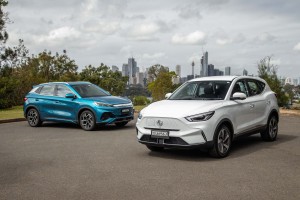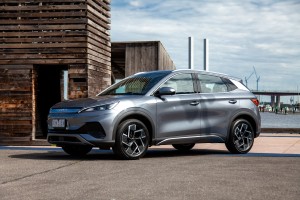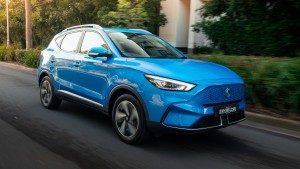Latest Review
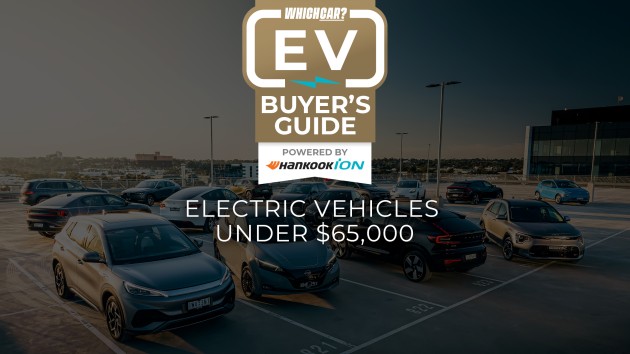
Best Electric Cars Under $65k: Affordable EVs Rated
Welcome to part one of three price-based EV buying guides, this one focused on the most affordable electric cars available in Australia today
If you're ready to make the leap into an electric vehicle but you've got a close eye on the budget, these are the most affordable EVs on sale in Australia right now – and what we think of them.
This guide is intended to serve as an outline of each model available in that critical $65,000 category, to help you decide which models you'd like to know more about. With each model listed below, you'll find links to our more comprehensive deep-dive reviews of each car.
Welcome to our EV Buyer's Guide: Electric Vehicles Under $65K Ranked – The Best and The Rest
The hope is that we’re only a year away from having more affordable electric cars to create a worthwhile Under $50,000 category.
Even to create a meaningful Under $65K category, we’ve allowed for three models being a few-hundred bucks over the ceiling. Yet it's also fair to say that, in many states, those cars would fall below $65,000 after rebates and/or state duty exemptions or discounts are applied.
Chinese brands are leading the way for Australia’s most affordable EVs. Depending on your state, either the BYD Atto 3 or MG ZS EV are the most affordable electric cars available in Australia – each starting from about $45,000 driveaway. The Atto 3 heralds the arrival of the Build Your Dream brand, imported by local distributor EV Direct.
MG couldn’t find a ZS EV for our Megatest, though we’ve previously, and recently, reviewed and compared it (with the Atto 3) – for which you’ll find links below. BMW also couldn’t provide an electric Mini, the only other EV under $100K that missed out on our Megatest.
Nissan’s pioneering Leaf – one of the first EVs sold globally – is also present, along with the fully electric version of the Hyundai Kona, the second-generation Kia Niro EV, and Mazda’s sole (and slightly leftfield) EV, the MX-30.
An intriguing group is completed by Australia’s best-selling electric car – the Tesla Model 3.
If you have a bigger budget for an electric vehicle, watch for our other stories in this series to land soon:
- EV Buyer’s Guide: $65K-$80K
- EV Buyer’s Guide: $80K-$100K
NOTE: This story, along with our other price-based EV buying guides (see links below) will be updated over time. You may see the scores and ranking of these models change as they age and as more compelling rivals enter the market. |
JUMP AHEAD
- BEST BUY: Tesla Model 3
- $65,500 + on-road costs
- Mid-size sedan, 5 seats
- Single-motor RWD, 62.3kWh battery
- 491km range, 170kW fast charge
- Highly recommended: BYD Atto 3
- $48,011 + on-road costs
- Small SUV, 5 seats
- Single-motor FWD, 60kWh
- 480km range, 80kW fast charge
- Highly recommended: Hyundai Kona EV
- $60,500 + on-road costs
- Small SUV, 5 seats
- Single-motor FWD, 64kWh
- 486km range, 77kW fast charge
- Kia Niro S
- $65,300 + on-road costs
- Small SUV, 5 seats
- Single-motor FWD, 64.8kWh
- 460km range, 80kW fast charge
- Mazda MX-30
- $65,460 + on-road costs
- Small SUV, 5 seats
- Single-motor FWD, 35.5kWh
- 224km range, 50kW fast charge
- MG ZS EV
- $48,990 drive-away
- Small SUV, 5 seats
- Single-motor FWD, 50kWh
- 320km range, 50kW fast charge
- Mini Cooper SE
- $62,825 + on-road costs
- Small hatch, 4 seats
- Single-motor FWD, 33kWh
- 234km range, 50kW fast charge
- Nissan Leaf
- $61,490 + on-road costs
- Small hatch, 5 seats
- Single-motor FWD, 62kWh
- 385km range, 100kW fast charge
- VERDICT 🏆
- COMING SOON: Charging and driving range tested 🔌
Let's get into it: These are all the electric vehicles available in Australia for under $65,000 (with three exceptions), rated from best to worst, as tested and assessed by the Wheels Media team.
BEST BUY: Tesla Model 3
No other manufacturer is as integral to the proliferation, popularity, and technological advancement of electric cars as Tesla, and for the American manufacturer the Model 3 is its core product.
NOTE: At the time of publishing, the Model 3 is priced from $65,500. We've included it here as an editorial choice – largely because most states and territories provide rebates that would see it come under our category cap – but if the price continues to rise, you'll find it in our EVs Priced From $65-85k story. |
The hype surrounding this model is significant, and well-earned, but there are certain factors that potential buyers should be aware of.
Standard features on the 2022 Model 3 include but are not limited to LED headlights, LED daytime running lights, 18-inch alloy wheels, a panoramic glass roof (with ultraviolet/infrared protection), and a collection of cameras for Tesla’s much-hyped driver aids. (Note: This paragraph originally mentioned ultrasonic sensors as well, but Tesla has removed that tech from its latest builds.)
The cabin has dual-zone climate control, 15-inch central multi-function touchscreen, electric front seat adjustment, heated steering wheel, heated front/rear seats, and dual wireless phone charging.
One of the smartest additions is the dual inductive charging tray placed under the central infotainment screen. It is worth noting that if you are reading this months or years after the story is initially published that you should check what changes may have been made to the features list – more than any other manufacturer Tesla loves to update and change its standard offering.
Minimalist is an understated descriptor of the Model 3’s interior with it sole feature being the 15-inch touchscreen that contains almost literally every one of the cars functions. A pair of wheel-mounted dials take care of a handful of controls, while everything else will have you prodding the screen. While crisp and quick to respond to inputs, the Tesla’s infotainment operating system requires plenty of time to learn.
Spartan design aside, there is plenty of headroom in the cabin, and the front glass stretches above front occupants to give the Model 3 and incredibly airy feeling inside. Both front and rear boots offer plenty of storage as well.
With a 62.3kWh battery pack, the Model 3 offers a healthy real-world driving range thanks to its impressive efficiency on our test loop. This is complemented by the fastest charging of any contender – something owners will benefit from using both ultra-rapid 350kW chargers from the likes of Chargefox and Evie, as well as Tesla’s own supercharger network.
The driving experience in the Model 3 is initially dominated by mentally adapting to the fact there are no instruments directly in front of you. Once you clear this hurdle (which happens surprisingly quickly) you key into the Model 3’s true nature. While the ride is a touch on the firm side, it doesn’t crash and has an impressive level of body control that makes the car perform above expectations on a challenging driver’s road. Aiding this is a quick steering calibration with the Tesla’s wheel bereft of any dead zone, the front-end darting eagerly in response to inputs.
Everything about the Tesla Model 3 diverges from tradition, from the purchasing and after sales, to how you unlock the car. Which for many is exactly what they want from an EV. However it does create a cultural barrier of entry for some prospective buyers.
The Model 3 is a love/hate car. You either get it, or you don’t.
Its battery technology is some of the best you can find in the market, the in-house supercharger network is unmatched by any other OEM, and its infotainment (while having a learning curve) has a suite of features that cannot be found elsewhere. If you are pulled in by its many unique facets the Tesla Model 3 remains as cutting-edge as ever. While its competitor set has never been more compelling, no EV buying process will be complete until you’ve conducted a test drive to see if this pioneer is right for you.
Hit the link below for our comprehensive news and reviews on the Model 3.
SCORING
2022 Tesla Model 3 RWD standard range specifications
Highly recommended: BYD Atto 3 Extended
Hugely hyped and just a touch controversial, the BYD Atto 3 hits the mark for an affordable EV that’s well-built, well-equipped and decent to drive
UPDATE, December 9: , up from a starting point of $44,381 to a new $48,011 before on-road costs. It maintains a highly-recommended ranking in this guide.
Tesla is often hailed as the great EV disruptor but right now the BYD Atto 3 might be more deserving of the title. Since it burst onto Aussie roads three months ago, the fresh Chinese brand has been making waves with its attractive pricing, quirky cabin design and new ‘blade battery’ tech.
There have been scandals, too. There was an early kerfuffle when BYD’s local importer reneged on its promise to offer an 7-year/unlimited km warranty and instead wound it back to 6yrs/150,000 kms with multiple conditions. The brand also found itself in hot water recently over compliance issues regarding child-seat tether points, but it worked quickly to resolve the fault and secured a 5-Star ANCAP rating soon after.
Demand, though, seems almost unquenchable. BYD isn’t yet counted in the official monthly sales figures but anecdotal reports suggest it was Australia’s second most popular EV brand in October, trailing only Tesla.
The biggest drawcard is price. Aussies have been crying out for more affordable ground-up electric cars and in 2022 we finally have some. There are two versions of the Atto 3 to choose from: the ‘Standard’ variant starts at $48,011, but the model we’re testing here is the ‘Extended’ which retails for $51,011 before incentives and on-roads.
The main difference between the two is battery size. The Standard car has a 50kWh battery pack that offers 345km of range while the Extended has a 60kWh battery and a claimed range of 420km.
Our real-world testing found that claim to be pretty accurate, too, with the Extended covering 390km on a full charge. Both versions of the Atto 3 are front-wheel drive and produce 150kW/310Nm, regardless of which battery you buy.
But the appeal runs deeper than a sharp price tag. Slip inside an Atto 3 and you’ll discover it’s considerably roomier than its rivals. In fact, next to an MG ZS EV and a Hyundai Kona EV it almost feels a class above for space. The front seats are broad and comfortable and in the rear you’ll find a flat floor, dedicated air vents and enough room for 6-foot adults. The 440L boot is also the largest in this class and there’s a healthy list of standard safety gear, paired with a five-star ANCAP safety rating issued in late November 2022.
Even better is the cabin doesn’t feel cheap. The mix of materials does verge on odd in some places – the centre section of the dash, which is designed to look like a bulging bicep, is trimmed in what feels like recycled wetsuit – but all of the controls have a high-quality feel to their action.
There’s a decent helping of fun, too, like the rocker-style door handles and rotating central screen that allows buyers to choose between portrait and landscape orientations. What’s missing? Well there’s no native sat-nav or Apple CarPlay/Android Auto. You do score an inbuilt dash cam, though.
Decent dynamics are built around consistently weighted steering and a ride/handling compromise that’s pleasingly supple at urban speeds but a word of warning – there isn’t sporty bone in the Atto 3’s body.
The initial step off, which is usually zippy in an EV, is surprisingly languid and on our challenging road course the BYD displayed poor body control and struggled to recover from big mid-corner bumps. The regen braking is also underwhelming and only offers mild recuperation in both of its two settings.
Still, while it’s easy to unearth some scrappy dynamics on a twisty road, the Atto 3’s saving grace is how it performs up to seven or eight tenths. It’s quiet, comfortable and as a package, it’s a rung above its rivals for space, equipment and quality.
But there’s a catch: BYD still has an unproven record in Australia for reliability and customer support. If you’re comfortable with that unknown, however, there’s lots to like and recommend about the Atto 3.
Hit the link below for our comprehensive news and reviews on the Atto 3.
SCORING
BYD Atto 3 Extended Range specifications
Highly recommended: Hyundai Kona Electric Elite Extra Range
While the Ioniq 5 has captured global attention, the electric version of the Kona small SUV is Korea’s quiet achiever.
It’s no revelation that EVs are generally expensive, and Hyundai’s Kona range reinforces the view. You could have a Kona N performance variant and still save more than five grand over the most affordable electric Kona.
That entry price is $54,500 for the Elite Standard Range, which employs a 39.2kWh battery serving up a WLTP range of 305km.
Our Megatest contender is the Elite Extra Range that adopts a 63 per cent bigger battery to ensure it doesn’t contravene advertising regulations – boosting the Kona EV’s WLTP distance by 59 per cent to 484km.
That 64kWh battery proved to be more than good as its word. The Kona EV delivered the best efficiency of our entire group – 13.06kWh/100km – with a calculated maximum tested range of 490km.
Just as impressively, the Kona’s tested range was second only to the BMW i4 (513km)
Hyundai’s Kona EV has been around since 2019 in Australia, the Korean brand’s second electric car after the regular Ioniq. A second-generation Kona is due in 2023, though it’s unclear whether the EV variant will launch the same year.
Featuring the same 4.2-metre-long dimensions as the four-cylinder petrol Kona, the EV shares the same interior-space limitations.
The rear seat is tight for both legroom and toes, with comfort further compounded by a flat bench and a lack of rear vents.
Boot space, too, is compact. Hyundai quotes just 332 litres for luggage volume – a figure that would be below average for a small car let alone an SUV.
The rear seats fold in a 60-40 split without going fully flat. There’s underfloor storage, including a polystyrene section custom-shaped for a charging-cable bag to help keep things neat.
The limited interior space is less of an issue for buyers considering the Kona EV as a second car for urban use.
The front cabin such owners would care more about is less claustrophobic and serves up part-leather seats that are both comfortable and supportive. Electric adjustment and heating/cooling are reserved for the more expensive Highlander grade.
Materials quality is commendable in places, such as the central dash section, door trim, and headliner.
The cabin doesn’t present a particularly contemporary design in all aspects, notably the silvery plastics that look like a leftover from the early 2000s.
Modern features, however, include wireless charging, digital radio, and 10.25-inch digital displays for the infotainment system and (configurable) driver instruments.
Unlike the related Niro, Hyundai hasn’t dialled down the torque of the front-mounted electric motor, so there’s 395Nm at the driver’s disposal.
Feels like it, too. The electric Kona responds with immediacy to the slightest squeeze of the throttle pedal and continues delivering sprightly acceleration the closer the pedal gets to the carpet.
Hyundai quotes 7.9 seconds for the 0-100km/h sprint, which seems pessimistic.
We imagine judicious use of the accelerator pedal would be wise in wet conditions.
Lifting off the same pedal can bring the Kona to a complete stop if the regenerative braking system is set to its maximum via the paddle levers behind the steering. Or there are milder settings for those who prefer more conventional motoring, using the brake pedal.
As with many EVs, the Kona Extra Range’s relative portliness – 1.7 tonnes – is well disguised by the instantaneous torque.
The (130kg-lighter) Kona N exists for those looking for a bigger dose of excitement and agile handling, but the Extra Range has a well-sorted suspension that provides both effective body control and suppleness.
Smooth steering with 2.5 turns lock to lock makes the Kona satisfying to direct around streets and along country roads.
If the $6000 between the Standard and Extra Range models is one decision for buyers to make, the other is opting for either the Elite or the Highlander grade that costs an extra $3500. Budgets will strictly dictate the answer in many cases.
Highlander models seem good value for the extra spend, adding the electric driver’s seats, heated/ventilated front seats, heated steering wheel, sunroof, head-up display, front sensors, and LED headlights with auto high beam. The latter feature should be standard on all models, though.
The Kona Extra Range’s most compelling feature, however, remains its range.
Hit the link below for our comprehensive news and reviews on the Kona Electric.
SCORING
Hyundai Kona Electric Elite Extra Range specifications
Kia Niro EV S
The Niro was Kia’s first EV, and only arrived in Australia in its first generation in 2021 before being treated to a second-generation model offering fresh looks and tech in 2022.
NOTE: At the time of publishing, the Niro EV is priced from $65,300. We've included it here as an editorial choice – largely because most states and territories provide rebates that would see it come under our category cap – but if the price continues to rise, you'll find it in our EVs Priced From $65-85k story. |
This is the second-generation Kia Niro, replacing the original that had a short shelf life in Australia having been introduced in mid 2021, late in its lifecycle.
A plug-in hybrid variant isn't offered this time, leaving a regular hybrid and the EV.
The Niro S electric small SUV costs $71,517 drive-away, which includes $520 steel grey premium paint. There are also seven other optional colour choices, with just clear white offered free.
For the money, in the Niro EV S you get as standard: an electric seat for the driver, a six-speaker sound system, one USB-A and one USB-C port in the front as well as two USB-Cs for the rear, and wireless Apple CarPlay and Android Auto.
Being the base grade, the S misses out on quite a lot of the nice kit found in the GT-Line, such as; satellite navigation, a sunroof, privacy glass, and a powered tailgate. It also makes do with a small-by-modern-standards, eight-inch infotainment screen – which is paired up with a 10.25-inch digital cluster.
The Niro’s unit however performs just fine, with media and climate controls accessible via the dual-function haptic-touch bar running along the bottom of the dash, which is easy enough to use, but can be a bit fiddly and distracting stretching across from the driver’s seat to reach certain elements at times.
The interior of the S grade looks and feels of a high quality, and the seats are suitably comfortable and well padded. The driver’s side can be adjusted electronically, but unfortunately the passenger’s side just gets manual controls.
Despite being the entry-level version, the S still gains access to almost all of the marque’s full safety suite, including key features such as: advanced smart cruise control with stop and go and blind-spot collision assist with rear cross-traffic warning and avoidance.
Additionally, it has a five-star safety rating awarded by ANCAP in 2022.
Legroom is good in the rear – more than you'll find in the slightly smaller Kona. A transmission tunnel, however, betrays the fact the Niro uses a combustion-electric platform rather than dedicated-EV architecture.
Storage throughout the cabin could also be more generous.
Despite offering less power than its bigger EV6 sibling, the Niro EV offers good performance.
It doesn't drive as well at the Car of the Year-winning EV6, however.
The steering disappoints with its inconsistent weighting, and the level of ride comfort is determined by the quality of the road you're travelling along. Anything less than smooth and the Kia's suspension becomes annoyingly fidgety.
The Niro EV S has a WLTP-quoted driving range of 460km, with energy consumption rated at 16.2kWh/100km.
Impressively, from our testing the Kia returned a theoretical range just two kilometres shy of that claim - and it was the second most efficient EV in the entire group.
With an 80kW DC fast charger Kia says the Niro will charge in 43 minutes, or an hour and five minutes with a 50kW.
Like all Kia products, the 2022 Kia Niro EV S has a seven-year/unlimited kilometre warranty, again with seven years or 150,000km of battery cover and capped-price servicing.
Servicing is every 12 months or 15,000km which begins at $87 for the first year, or Kia offers a pre-paid service plan instead where the first three years is $621.
The 2023 Kia Niro EV S is a solid electric vehicle. Its crossover styling is easy on the eye, and offers good levels of rear passenger room and boot space to make a tempting proposition for families looking for their first EV.
However, looking specifically at the entry-level S variant, there’s a lot of kit missing for a vehicle that will cost more than $70K once you’ve thrown in on-roads.
Hit the link below for our comprehensive news and reviews on the Niro.
SCORING
2022 Kia Niro EV S specifications
JUMP TO...
Mazda MX-30 E35 Astina
The E in Mazda’s MX-30 E35 boot badge stands for electric, esoteric and expensive
NOTE: At the time of publishing, the MX-30 E35 Astina is priced from $65,460. We've included it here as an editorial choice – largely because most states and territories provide rebates that would see it come under our category cap – but if the price continues to rise, you'll find it in our EVs Priced From $65-85k story. |
Among a growing number of high-achieving EVs available in Australia, Mazda’s electric foray appears to have a tough job convincing electric proponents that it deserves a look. Not only does the MX-30 E35 have a relatively short range of 224km and modest performance it also comes at an eye-watering price of $65,500.
Compared with almost all other EVs on the market, the unorthodox Mazda’s value equation appears impossible to solve. And yet, the quirky crossover has the ability to quickly melt a frosty reception with some irresistibly charming features.
As only the third model in Mazda’s history to wear the MX badge, its first pure-electric coupe-profiled crossover certainly deserves to be labeled ‘Mazda Experimental’ but has it been too much of a risk?
Perhaps the biggest departure from the company’s Kodo design language to date is certainly one of its selling points – especially when applied to the mild hybrid and combustion variants which get the same looks.
‘Freestyle’ doors are one of the most notable design features but, in practice, the overlapping front and rear doors quickly become a hindrance in tight parking spots.
The mechanism also prevents the inclusion of an openable window for the rear passenger, while its bulky construction requires thick pillars that create a van-like rearward view. On the inside, the polarising design continues.
Cork touch-points are a cool nod to Mazda’s origin and have a pleasant warm feel but the interesting material appears more like reconstituted plastic compared with the more natural and beautiful material showcased by the MX-30 concept.
That aside, the cabin ambience, finish and quality is in keeping with the Japanese car maker’s bid to push its brand into more premium territory and perhaps comes part way to justifying the hefty price.
With a diminutive 107kW and 271Nm from its single 355-volt motor and 35.5kWh battery, performance expectations were decidedly low, but the MX-30’s electric drivetrain adds just 160kg to the kerb weight of the petrol versions and its road manners are surprisingly spritely.
Front end grip is impressive, as was body control paired with an eagerness to change direction and recover without complaint. Combined with creamy steering, the driving experience delivers more than simple figures on paper suggest and earns the MX-30 more respect than most may be prepared for.
With a relatively small battery, the E35 can give the illusion that it is relatively fast to charge but it’s actually below average. With a max charge rate of 50kW and the smallest battery in the current EV market, we recorded an average rate of half the claim and 24.8kW/h.
A strange Jetsons-style generated sound under acceleration will definitely be a love-or-hate feature for the handful of owners that take the plunge, while the boomy cabin noise is too much for an otherwise quiet and comfortable EV.
Compared with the petrol and very-mild hybrid versions of the MX-30, the electric E35’s less conventional powertrain is a better pairing with its mould-breaking design and one might argue the forthcoming rotary range-extender is the version that’ll better honour the MX moniker.
With only 311 litres of boot space, the list of practical shortcomings is added to, and there’s no winning back any luggage area at the front end with the electric drivetrain occupying all the under-bonnet space.
Standard kit highlights include 18-inch alloy wheels, glass sunroof, Bose sound system, heated front seats and steering wheel, adaptive LED headlights and an 8.8-inch central digital display, complemented by a fully digital touchscreen for the climate and comfort settings as well as a 7.0-inch digital display for the driver’s information.
Ultimately, it is the questionable packaging, meager range and mighty price disparity that relegates this intriguing Mazda to the ‘not quite’ pile. Perhaps Mazda went a little too experimental for its latest MX model resulting in a charming car that’s unfortunately a practically compromised exercise of style over substance.
SCORING
Mazda MX-30 E35 specifications
MG ZS EV
Tested separately
A non-starter for this megatest, but past experience provides a solid guide to its likely form … solid.
MG couldn’t make its updated ZS EV available to us for this test, but we’ve included it here with assessment based on its comparison performance against the BYD Atto 3.
First, the basics. Following an update in 2022, the new ZS EV is now offered in two trim levels. The entry-level Excite is $44,990 drive-away, while the Essence, which adds blind-spot monitoring and rear cross-traffic alert, along with leather trim, heated front seats with electric adjustment for the driver’s seat, wireless phone charging, and a vast panoramic glass roof, is $48,990 drive-away.
From the front, at least, you won’t have any trouble telling old from new. The new model loses the very Mercedes-inspired starry grille, instead running a much more aero-looking, mostly enclosed snout, giving it a more distinctive front end compared to petrol variants of the ZST.
New, brighter LEDs also feature front and rear. It’s a cohesive if conservative exterior design; not what you’d call distinctive, but not likely to cause offence either. Build quality, too, feels excellent. The doors shut with a thunk and panel gaps are snugly uniform.
Power for the updated model is 130kW (up from 105kW) while torque has been pared back from 353Nm to 280Nm; sounds significant, but the ZS EV still feels eager and responsive in urban driving. The 0-100km/h claim is 8.6 seconds, so it’s not a quick car in outright terms, but is way more spritely than a typical small SUV powered by an ICE.
Regenerative braking, as with the original car, can be set in three stages, each providing a usefully distinct level of off-throttle behaviour. The strongest isn’t enough for one-pedal driving but it still does slow the car appreciably and can harvest useful amounts of otherwise lost energy.
As for the dynamics, changes to the spring rates and dampers have gone some way to fixing the old car’s propensity to wallow over undulations and generally feel like the front and rear ends were often out of sync with each other.
However the MG ZS EV is not a particularly sporty drive, and the use of a torsion-beam rear suspension, as opposed to a more sophisticated multi-link layout, can make the car more reactive to mid-corner bumps.
The cabin is a far more conventional design than that of the flamboyant BYD, and not quite as roomy. The lack of reach adjustment for the steering wheel may make finding the optimum driving position elusive for some people, but otherwise there’s minimal weirdness going on in the cabin, a good level of intuitive user-friendliness and excellent equipment.
The new 10.0-inch screen is bright and responds quickly, but the camera view is a bit low-res. The graphics showing charging status and all the relevant battery info are clear and logical.
Both Excite and Essence models feature the active safety and driver assistance tech bundle called MG Pilot, which comprises adaptive cruise control, forward collision warning, automatic emergency braking, lane-keep assist with departure warning, traffic jam assist and intelligent cruise assist. But as mentioned, you need to step up to the top-spec Essence for blind-spot monitoring and rear cross-traffic alert.
Battery capacity is now 50kWh, while claimed WLTP range is 320km; expect around 280km in the real world. We’re yet to test the fast charging capability, so can only quote MG’s guidance, which is that 80kW DC charging will take the battery from 20-80 percent in 50 minutes.
This is an EV for the buyer who wants car from a brand with which they are familiar, backed by a generous warranty – MG’s seven years is among the best – and with an interior that feels well-made, well-equipped, and somehow familiar. Blazing pace and on-limit dynamics don’t really figure in the purchasing decision. Solid but unremarkable is ample.
MG knows its customers, hence the brand’s meteoric climb up the Aussie sales charts.
Hit the link below for our comprehensive news and reviews on the ZS.
SCORING
MG ZS EV specifications
Mini Cooper SE
Tested separately
BMW couldn't make a Cooper SE available for this group test, but as one of the coolest ‘urban’ EVs around, we've included it here on the strength of previous testing
If the Nissan Leaf is sustainable tailoring from Kelly Country, then the Mini Cooper SE is the latest plant-based suiting from Paul Smith. And I’m not just saying that because the two brands collaborated on a concept.
You see, the Leaf is an electric vehicle that has more range than its often given credit for and is relatively affordable. The Cooper SE isn’t. Affordable is not the right word to describe it, and that might be why BMW couldn't make one available to be assessed against this group.
Still, in one of Sydney’s more affluent suburbs I was stopped by a well-dressed professional in ‘my’ three-door Black and Chartreuse SE Yours who declared the Mini’s $62,825 list price was “pretty reasonable”. To each their own.
With only 234km WLTP driving range from its 28.9kWh lithium-ion battery snuggled into BMW/Mini’s UKL2 combustion car platform, the Cooper SE is as short on range as Mazda’s MX-30.
Like bigger BMW products, the SE’s range estimation is pessimistic, and at 100 per cent the Mini’s 5.5-inch digital cluster only estimated 157km range.
It can also only take on electrons at a maximum 50kW (DC) for an 80 per cent fast-charge in 36 minutes or 11kW (AC) to recoup 100 per cent in 3 hours and 15 minutes.
Its 135kW power and 270Nm torque outputs do make it a nippy little hatchback, it has a scifi Jetsons-esque soundtrack. The ride on its 17-inch ‘Power Stroke’ alloys is firm yet its poppy, fun handling justifies the urban jostle. The Mini’s regenerative braking system is OK, but not as powerful as the system in the Leaf.
Inside there’s an 8.8-inch touchscreen with wireless Apple CarPlay, DAB radio and in-built navigation. The Mini is style over substance, but as an inner-city BEV there’s nothing as cool as a well-specced Cooper SE.
Hit the link below for our comprehensive news and reviews on the Cooper.
SCORING
Mini Cooper SE specifications
2022 Nissan Leaf e+
The Leaf might now seem like an EV out of time, but it still has plenty going for it – if you can overlook a few points
The Nissan Leaf, starting from a relatively low $50,990, should still have a place in Australia. After all, not everybody can spend over $60,000 on an EV, ruling out the vast majority of models in this buyer’s guide.
That’s where this gets tricky: the EV we’ve got here is the Leaf e+, a more powerful, longer-range (385km vs 270km), faster-charging version of the new second-gen model. On a system level, this is the variant that competes best with most of today’s EVs.
The price? Over $60,000. $61,490, actually, which is $1000 more than when it launched last year. Everything is more expensive now, but it suggests Nissan can’t budget for repositioning the Leaf – which, while upgraded, features a whack of carryover first-gen tech and parts – in recognition of more stylish and further-driving $60k-ish alternatives.
Can Nissan really insist that the Leaf is a genuine rival to the $65,500 Model 3 and the $63,900 Polestar 2? It shares this problem with the $64,000 Hyundai Kona Electric, a compelling EV with a greater 449km driving range, but still a hard sell against the tech, style and range of the Tesla and the Polestar.
It isn’t without selling points, however. As a small car, the Leaf is fairly roomy, with good visibility in most directions, and overall comfort is good – although there’s no tilt adjustment for the seats, which will frustrate some. Practicality is otherwise strong, though, with its 400-litre boot comfortably outdoing the Corolla and Mazda3 – and, for that matter, comparing well against the Polestar 2’s 405 litres and the Model 3’s combined 425-litre front and rear cargo space.
To drive, the Leaf e+ can be quite satisfying. It’s no hot hatch, but, warm? Sure. Its upgraded power delivers swift acceleration as needed, and it’s almost irresistible to just stab the pedal for a quick little thrill. It claims a 0-100km/h time of 6.9 seconds, but the instant torque means it feels quicker, especially in rolling acceleration.
The 16.94kWh efficiency figure returned on our varied-conditions 200km test loop was fairly par, although 10 of the 15 other vehicles on test managed between 13 and 16.5kWh.
Comfort on the road is pleasant, providing a smooth and overall relaxed ride. Spirited driving sees the chassis inspire confidence, and the ‘e-pedal’ mode, applying significant energy-recuperating brake force when you lift off the accelerator – can be surprisingly useful and fun on approach to corners.
Safety is also a fairly modern proposition, with a 5-star ANCAP rating and Nissan’s Propilot system adding autonomous emergency braking, active cruise control, lane-keep assist, blind-spot monitoring, rear cross-traffic alert and a 360-degree camera.
Styling is subjective, but the cabin will leave something to be desired for most drivers, dominated as it is by a liberal use of hard plastics and a fairly out-of-date feel to the infotainment in both size and features. Its little gear shifter is fun, though.
The Leaf is also behind the pace in charging, because while it’s now quicker at a 100kW+ fast charger – getting its 62kWh battery from 20 to 80 per cent charge in 45 minutes – its method of fast DC charging is with the ChaDeMo plug style, the only EV in Australia to use that standard. The market has otherwise coalesced around CCS2.
While ChaDeMo is accommodated at most charging stations, it remains to be seen if future upgrades and new stations will continue to support the standard if government funding ever stops requiring it.
At home, it’s 11.5 hours off a 7kW wall charger to get from zero to 100 per cent – but again, you should rarely need a full charge, and you’ll rarely get home with a near-depleted battery.
Despite all this, there’s a good reason to consider the Leaf, and that is its legacy.
Nissan has been doing this a long time now, and it was already respected for its engineering well before the Leaf’s debut. With this car, you get the benefit of a proven electrical system and a far-reaching service network, and that’s nothing to be sneezed at. Especially when one newer brand elected to not participate in our testing.
If you don’t need the range of the e+, the base 40kWh 110kW/320Nm $50,990 Leaf and its 270km range may be worth consideration.
Hit the link below for our comprehensive news and reviews on the Leaf.
SCORING
2022 Nissan Leaf e+ specifications
VERDICT
BEST BUY: Tesla Model 3
RECOMMENDED: BYD Atto 3, Hyundai Kona EV
Nominating a best buy in our most affordable category is easy. With a score of 9 out of 10, Tesla’s Model 3 offers excellent performance, well-sorted dynamics, and a level of in-car technology that our other contenders can’t match. Throw in the convenience of Tesla’s extensive supercharger network, some of the best battery and recharging tech on sale, and an entry price that qualifies for the best state-government incentives available around Australia, and you have a complete and compelling package.
While Tesla’s cheapest model technically slips a whisker over our self-imposed price threshold, the BYD Atto 3 is well under it. The fresh Chinese contender is the cheapest car in this test, yet it feels well built, it’s well equipped, and it’s also surprisingly roomy. Dynamics aren’t a strength – they’re passable more than commendable – and BYD is yet to prove itself from a reliability and customer service point of view. There’s much to like on first impressions, however.
The last place on the <$65K podium goes to the Hyundai Kona. It’s on the pricey side for a small SUV, but it’s better to drive than the BYD, is noticeably quicker, and delivered the second-longest tested driving range. Only its cramped back seat and higher price saw it miss out on second place.
If you have a bigger budget for an electric vehicle, watch for our other stories in this series to land soon:
- EV Buyer’s Guide: $65K-$80K
- EV Buyer’s Guide: $80K-$100K
More EV stories to help you choose the best car for your needs
News
-
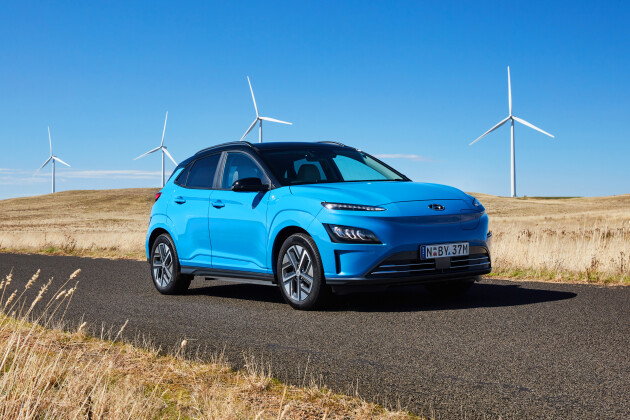 Advice
AdviceIs it time to switch to an electric car?
Is the tide of opinion and financial benefit finally turning on electric cars? We crunch the numbers on how much you could save by making the change.
-
 Advice
AdviceHow much more expensive are electric cars?
Amid inevitably increasing new car prices, how big is the electric vehicle price premium today?
-
.jpg) News
NewsMG Australia storms past 5000 units as ZS and MG3 hit Top 10
The MG ZS compact SUV is now the fifth most popular vehicle in Australia as the Chinese brand registers a record month. Compatriot brand GWM also among Top 10 brands.
-
 Advice
AdviceHow much does it cost to charge an EV vs fuel a car in 2022?
What are the running costs of an electric vehicle when compared to the internal combustion engined cars we've known for so long?
-
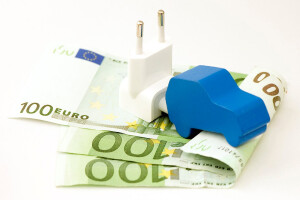
EVs that qualify for incentives in Australia 2022
-
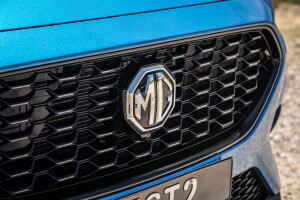
MG hit by supply chain delays – but big shipment expected next month
-
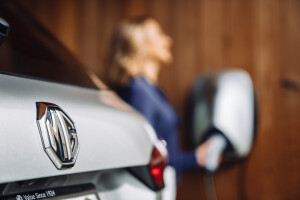
MG to subsidise EV chargers for regional NSW buyers
-
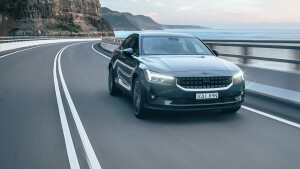
The electric vehicles you can buy in Australia


